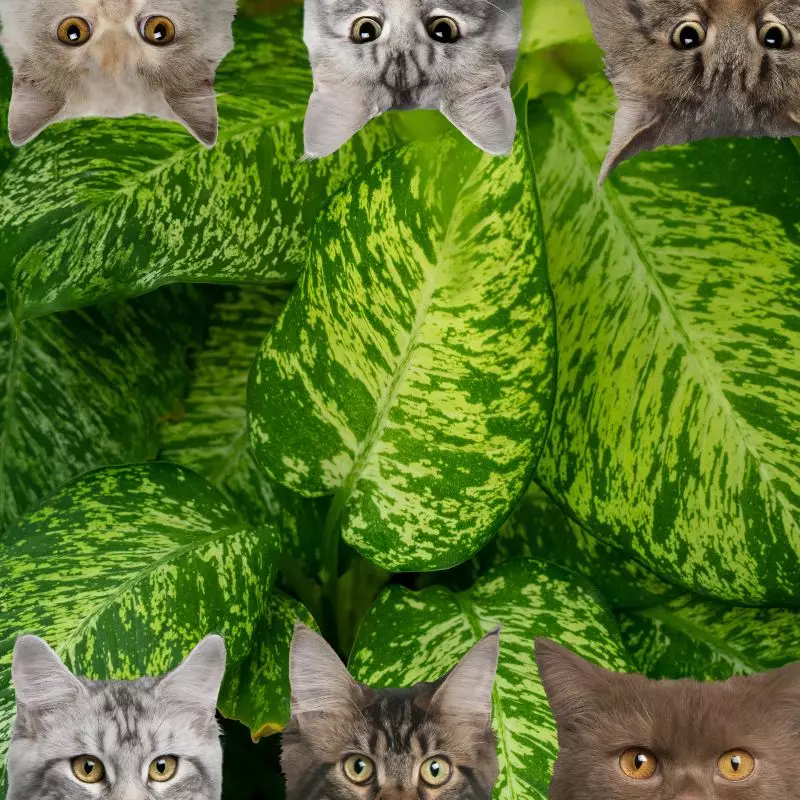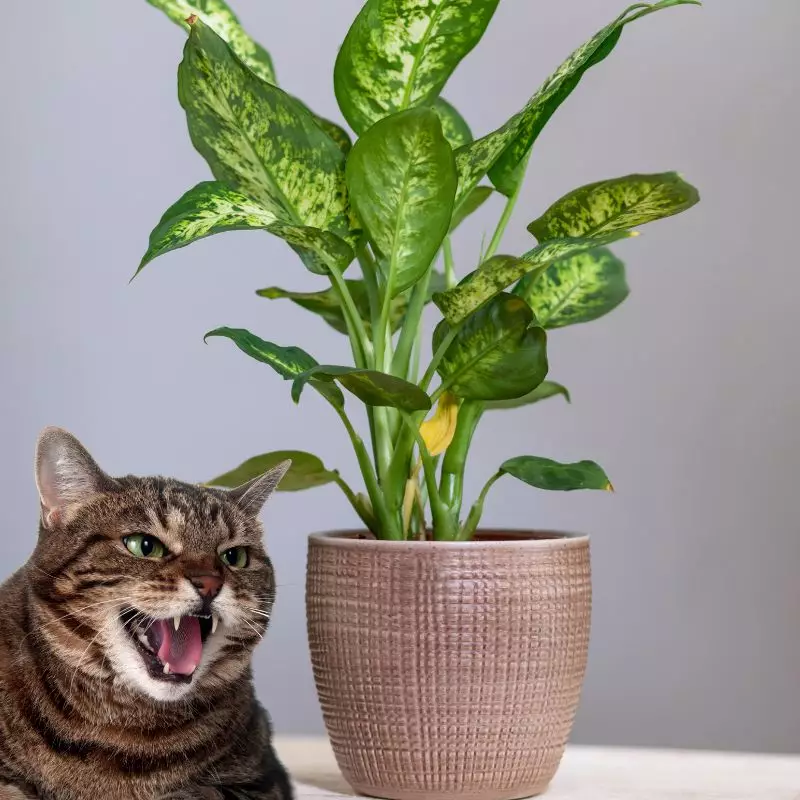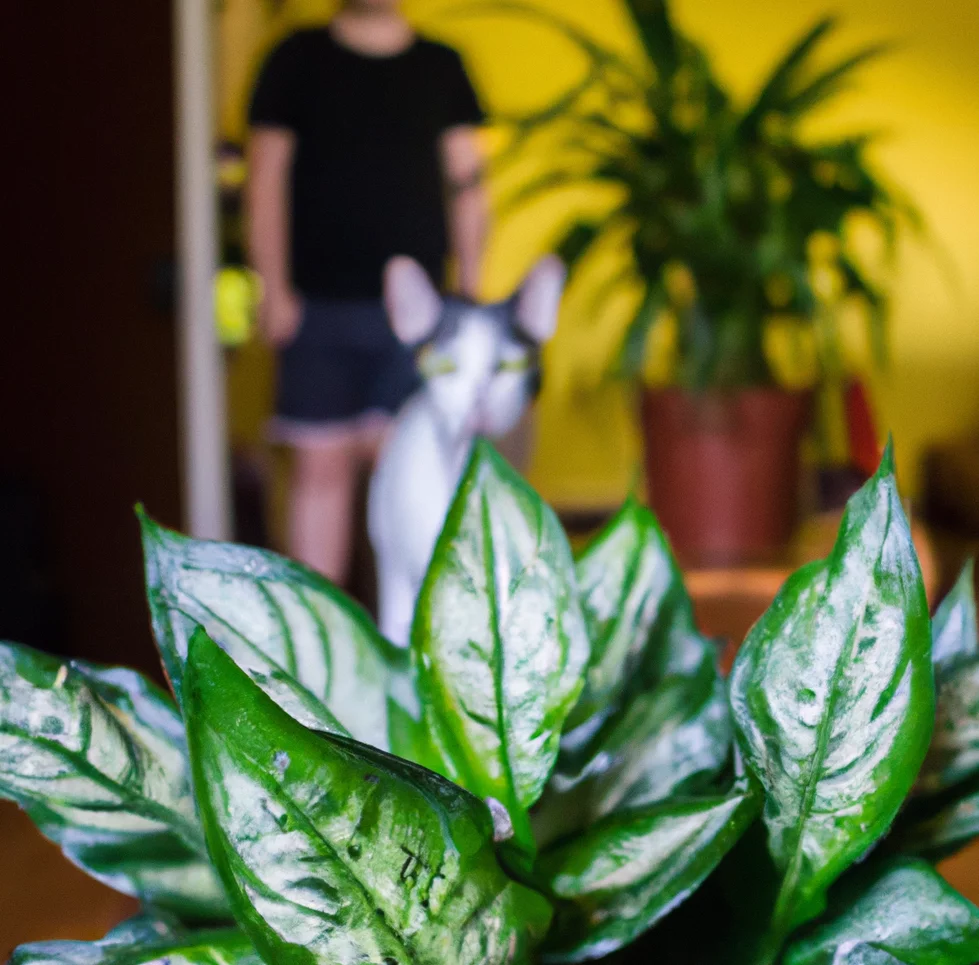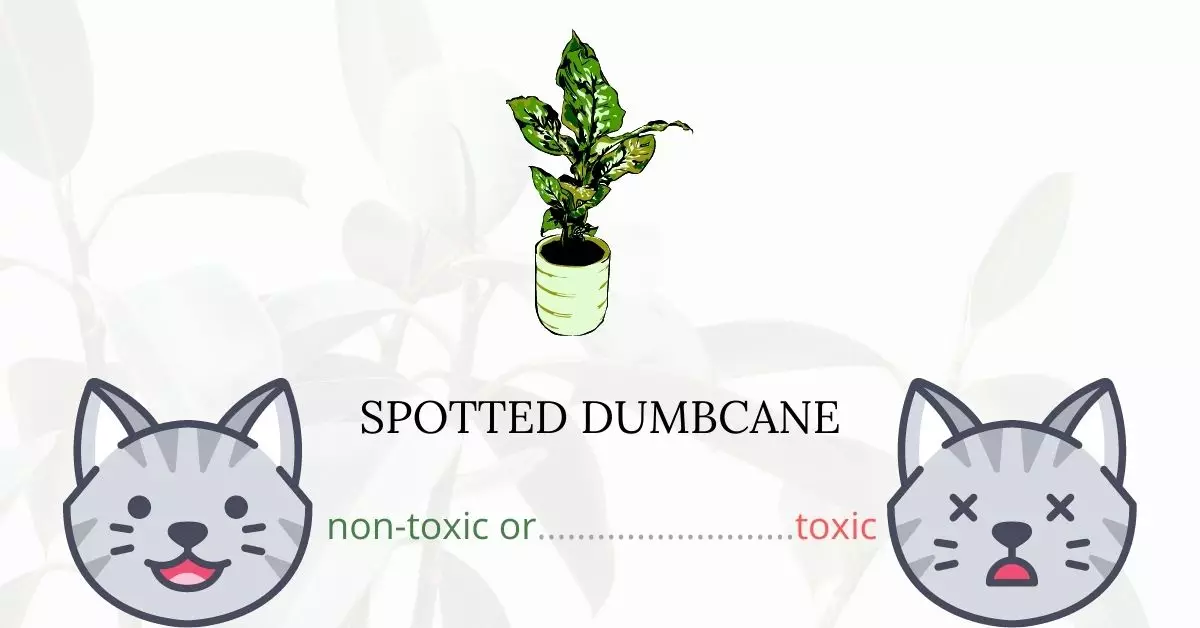Yes, the Spotted Dumbcane is indeed toxic to cats and poses serious risks to their health. The plant contains insoluble calcium oxalates, a substance that can cause severe discomfort and pain. In some varieties of dumbcane, a proteolytic enzyme is also present, amplifying the harmful effects of calcium oxalate crystals. When cats ingest any part of this plant, the specialized cells called idioblasts, housing the insoluble calcium oxalates, burst, allowing the toxins to pierce the cat’s mucous membrane, manifesting in a range of symptoms and discomfort for your feline companion.
This article is written in collaboration with a team of experienced Doctors of Veterinary Medicine (DVMs), who have lent their expertise to ensure the provision of accurate and current information regarding the potential risks associated with Spotted Dumbcane and its effects on cats. Additionally, this piece is substantiated by extensive research from high-authority sources, including the ASPCA and PetMD, to provide a comprehensive understanding of the implications of various plants on pet health. Through the contributions of veterinary experts and meticulous research, our goal is to offer reliable advice and insights to keep your pets safe and well-informed about the plants they may encounter.
Clinical Signs of Spotted Dumbcane Poisoning in Cats

When cats come into contact, ingest, or even just smell parts of a Spotted Dumbcane plant, they may exhibit numerous signs of poisoning due to the toxic elements present in the plant. The insoluble calcium oxalates and, potentially, proteolytic enzymes in the plant can cause immediate distress, with symptoms potentially enduring up to two weeks. Here is an explanation of the various clinical signs and the underlying causes:
- Oral Irritation: The release of calcium oxalates can lead to severe irritation of the mouth, lips, and tongue, causing intense burning and pain as they penetrate the mucous membranes.
- Pawing at the Mouth & Head Shaking: These actions are indicative of the discomfort and pain experienced due to the irritation in the mouth and oral cavity.
- Excessive Drooling and Foaming at the Mouth: The pain and irritation in the mouth induce increased salivation, leading to drooling and foaming.
- Difficulty Swallowing & Throat Swelling: The inflammation and irritation extend to the throat, making swallowing painful and difficult and causing visible swelling.
- Lack of Appetite: The discomfort and pain in the oral cavity and throat discourage food intake.
- Vomiting and Diarrhea: These are systemic reactions to the ingested toxins as the body attempts to expel the harmful substances.
- Protruding Tongue & Choking: The inflammation and discomfort can cause the cat to protrude its tongue and exhibit choking behaviors due to the irritation in the throat.
- Eye Irritation or Blindness: If the crystals from the plant come into contact with the eyes, they can cause significant irritation, and in severe cases, even blindness.
Each of these signs is a manifestation of the body’s reaction to the toxic substances within the Spotted Dumbcane plant and requires immediate veterinary attention to mitigate the harmful effects and alleviate the discomfort experienced by the cat.
First Aid and Treatment of Spotted Dumbcane Poisoning in Cats

Your cat will be monitored in the veterinarian’s clinic to ensure that symptoms do not worsen (breathing issues, liver and kidney issues). Any residual plant debris in her mouth can be rinsed away with water.
Benadryl, which helps to reduce inflammation and swelling, may be prescribed by your veterinarian. If her stomach is disturbed, she will be given Kapectolin to cover and protect the lining of her stomach. Sucralfate, which forms a paste when it combines with her stomach acids, might be used to coat the stomach as well. If your cat ate a lot of spotted dumbcane, your doctor will keep an eye on his breathing.
If she has trouble breathing, the vet will give her supplementary oxygen through flow-by or an oxygen cage until her breathing returns to normal. If her breathing problems are severe, she may need to be intubated until the edema in her airway subsides.
Recovery from Spotted Dumbcane Poisoning in Cats

Depending on how much-spotted dumbcane your cat consumes, she may merely feel pain, stomach trouble, and diarrhea, or she may develop respiratory issues and develop renal and liver failure. If you get your cat to the clinic as soon as you notice something is wrong, she may recover from spotted dumbcane poisoning.
It’s unlikely for any animal to consume a large amount of this plant because of its painful consequences. As a result, your cat’s chances of healing are substantially better.
Prevention of Spotted Dumbcane Poisoning in Cats
If you insist on having spotted dumbcane at home, make sure it’s in a room or location where your cat can’t get to it. It’s better to keep the plant in a room with the door closed or in a high-up area away from anything your cat could reach.
If you love plants but have cats at home, check out these lists:





